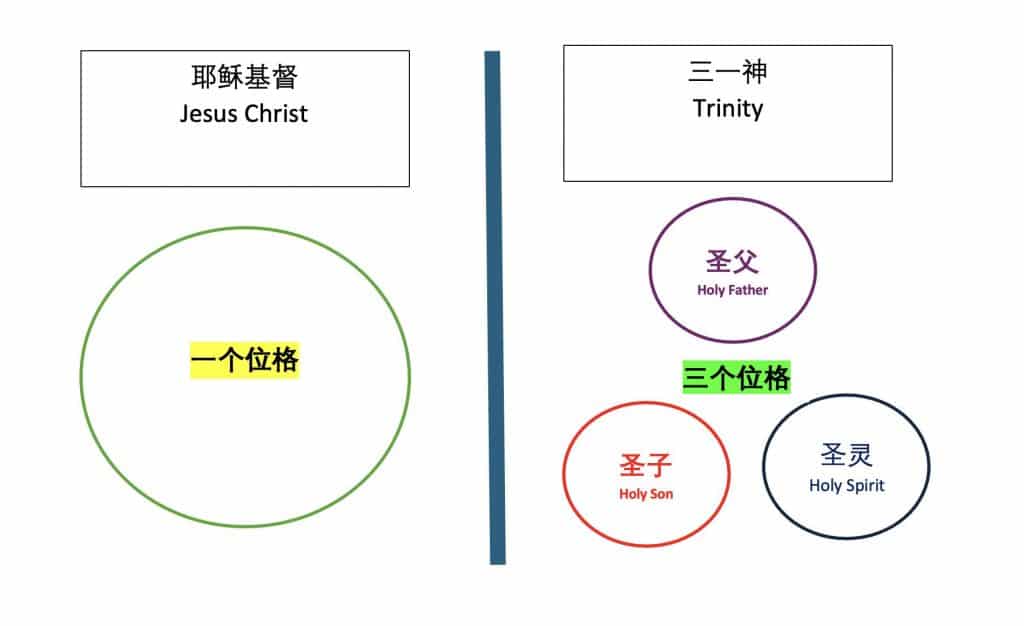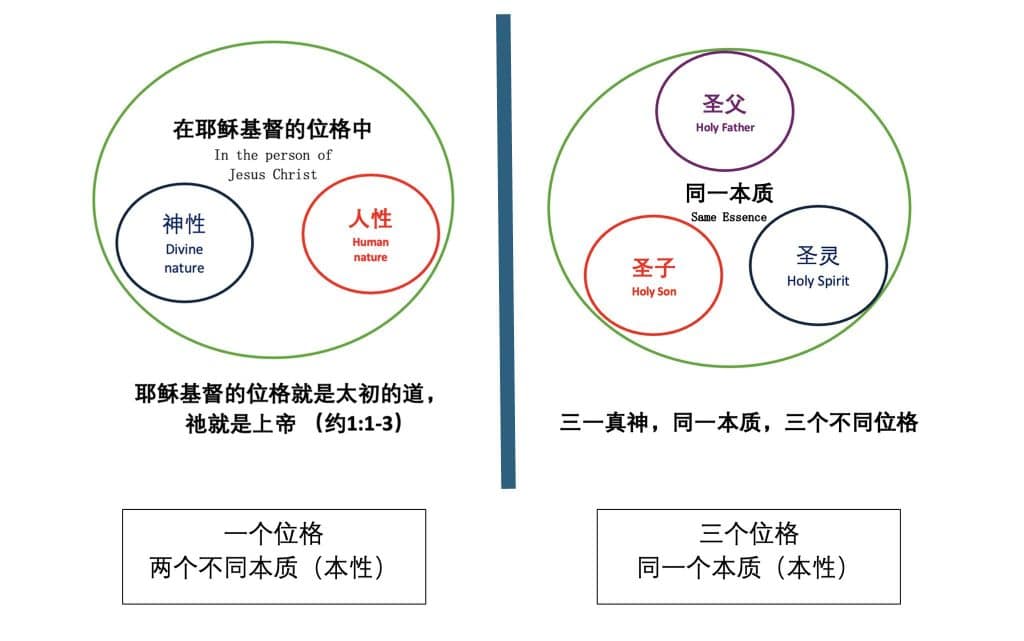另一方面,我们不能认为耶稣是两种位格,一种上帝的位格,一种人的位格,在同一个身体里走来走去。因为反映圣经教导的迦克墩信经说,尽管耶稣有二性,他却是一个位格。正如我们曾经看过的那样,这两性不混淆,不改变。但它们也不分开或分离。耶稣在一个位格里行事说话。
所以请记住这个方程式:两本性,一位格。我们在第三章思想三位一体的问题时,我们认识到在三位一体里有三个位格,一个本性或本质。在这里我们有一个相似但又不同,多少是掉转过来的表达方式。在耶稣基督里有两性,但只有一个位格。在本章余下的地方,我们要思想耶稣的神性,然后看他的人性,然后看这两个本性在他一个位格中的联合。(作者:Frame, J. M. 《简明系统神学》约翰 • 傅瑞姆) 第十章。
On the other hand, we should not think of Jesus as two persons walking around in the same body, one divine, one human. For the Chalcedonian Formula, reflecting the biblical teaching, says that although Jesus has two natures, he is one person. As we saw, the natures are without confusion and without change. But they are also without division or separation. Jesus acts and speaks as one person.
So remember that formula: two natures, one person. When we considered the Trinity in chapter 3, we learned that in the Trinity there are three persons, one nature or substance. Here we have a similar formula but different, somewhat reversed. In Jesus Christ there are two natures but one person. In the rest of this chapter we will consider Jesus’ divine nature, then his human nature, and then the union of these in his one person.
Frame, J. M. (2023). Concise Systematic Theology: An Introduction to Christian Belief (J. J. Hughes, Ed.; Revised and Enhanced Edition, pp. 168–169). P&R Publishing.


